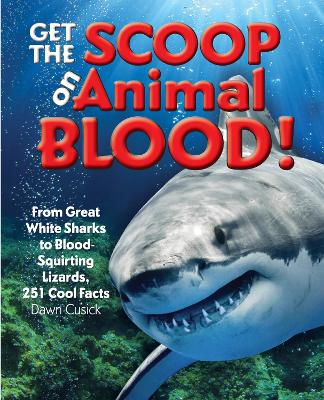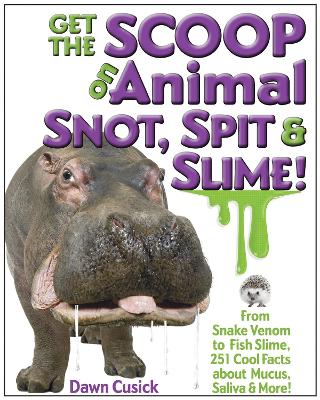Get the Scoop
3 total works
This book is hot blooded! And cold blooded! And green blooded! In fact, when you dive into the world of animals and their blood, things can get pretty gross and weird. But we know you like gross and weird!
In this installment of the award-winning Get the Scoop series, you will find out why deep-diving mammals have larger blood cells than other animals and more of them. Have you ever wondered how vampire bats prefer to eat their bloody breakfast? We'll tell you! How about why stink bugs have green blood, or while horned lizards squirt blood from their eyes? We know that stuff, too!
Get the Scoop on Animal Blood comes with more than 250 wild and awesome facts about animal blood, and also has over 200 color photos of animals and, you guessed it, their blood. With this book, you will be neck deep in bloody science fun.
Learn amazingly icky facts, see the yucky photos, and gross out everyone you can!
Welcome to a world filled with snot otters, puss caterpillars, spitting spiders, slime stars, snotties, and more! In Get the Scoop, you'll learn that snot, spit, and slime may seem gross, but there's a lot of amazing science in these icky fluids. Animals use them for communication, defense, to find food, to travel fast, and more.
Jellyfish and corals produce "mucus nets" to capture prey. Parrotfish burp out a mucus blanket to sleep under every night, while sea stars and sponges release volumes of mucus to distract and discourage predators. Barracudas use mucus in their scales to increase their swimming speeds and protect them from parasites. Poison dart frogs release toxins with mucus. Hagfish secrete slime if another animal tries to eat them. Clams and mussels make "mucus strings" to bring food to their mouths. Hippopotamuses release "blood slime" that works as sunscreen and an antibiotic.
Saliva helps animals in hundreds of ways, too. Anteaters and giraffes use sticky saliva to help them eat, while leeches, vampire bats, and ticks use chemicals in their saliva to help them feed on blood. Many mammals use saliva to help them recognize offspring and others spit saliva at predators and prey. The venom in shrews, snakes, and other reptiles comes from adapted salivary glands. Some animal saliva works like glue, helping swifts, termites, and wasps build nests.
Featuring 251 animal brain facts, Get the Scoop on Animal Brains digs deep and scoops out tons of fun facts about how animals use their brains to eat, find shelter, avoid predators, and survive. Did you know octopuses are multi-taskers? Since two-thirds of their neurons can be found in their arms, these marvelous creatures can crack open shellfish with one arm while doing something completely different with their others!
Did you know crows have remarkable memory and can recall the faces of humans that pose a threat to them? Or that bees can communicate with other bees through a series of waggle dances? These are just three of the hundreds of amazing things you will learn about animals and their brains in this fascinating, fully illustrated book.


